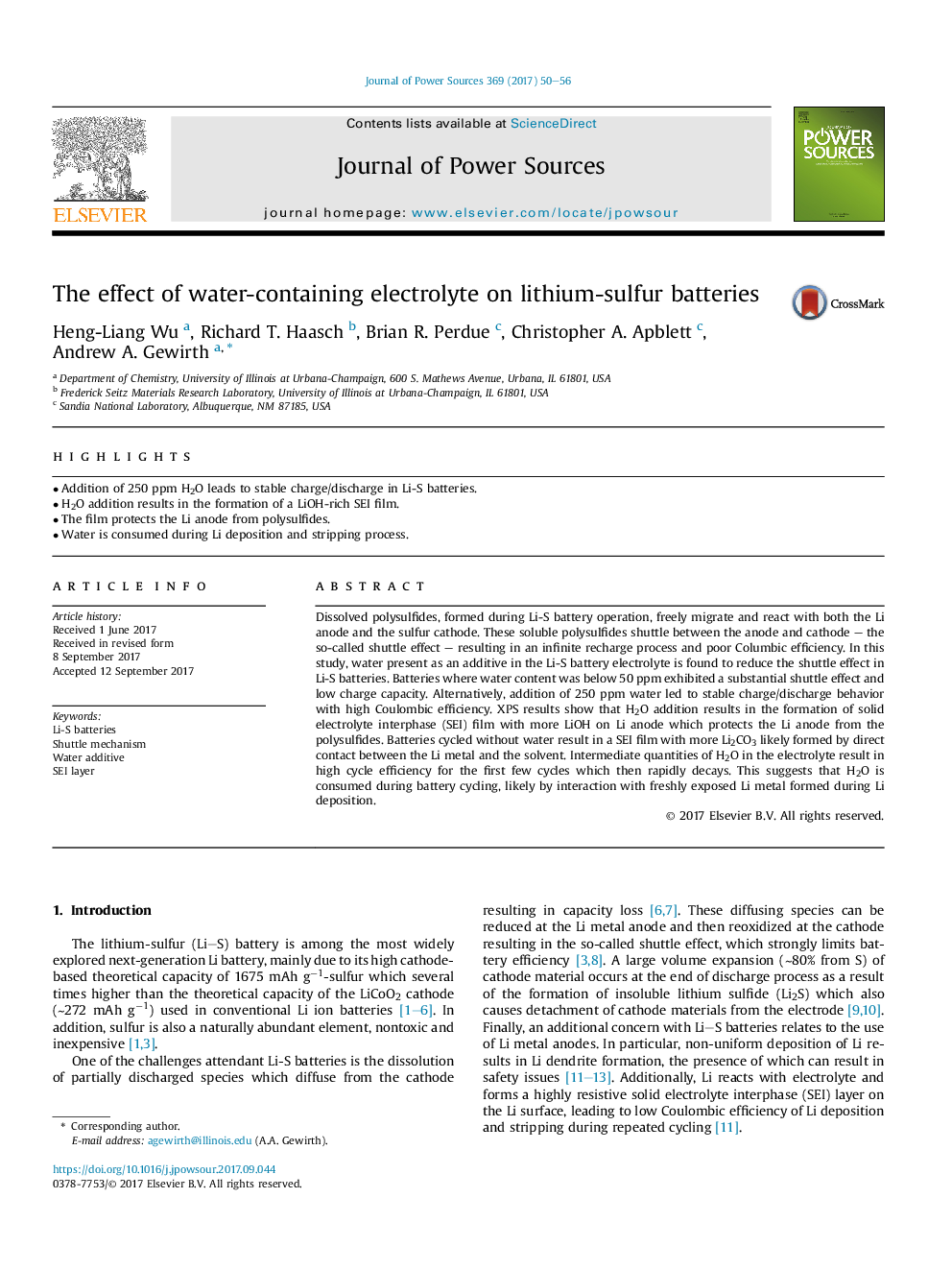| کد مقاله | کد نشریه | سال انتشار | مقاله انگلیسی | نسخه تمام متن |
|---|---|---|---|---|
| 5148659 | 1497863 | 2017 | 7 صفحه PDF | دانلود رایگان |
عنوان انگلیسی مقاله ISI
The effect of water-containing electrolyte on lithium-sulfur batteries
دانلود مقاله + سفارش ترجمه
دانلود مقاله ISI انگلیسی
رایگان برای ایرانیان
کلمات کلیدی
موضوعات مرتبط
مهندسی و علوم پایه
شیمی
الکتروشیمی
پیش نمایش صفحه اول مقاله

چکیده انگلیسی
Dissolved polysulfides, formed during Li-S battery operation, freely migrate and react with both the Li anode and the sulfur cathode. These soluble polysulfides shuttle between the anode and cathode - the so-called shuttle effect - resulting in an infinite recharge process and poor Columbic efficiency. In this study, water present as an additive in the Li-S battery electrolyte is found to reduce the shuttle effect in Li-S batteries. Batteries where water content was below 50Â ppm exhibited a substantial shuttle effect and low charge capacity. Alternatively, addition of 250Â ppm water led to stable charge/discharge behavior with high Coulombic efficiency. XPS results show that H2O addition results in the formation of solid electrolyte interphase (SEI) film with more LiOH on Li anode which protects the Li anode from the polysulfides. Batteries cycled without water result in a SEI film with more Li2CO3 likely formed by direct contact between the Li metal and the solvent. Intermediate quantities of H2O in the electrolyte result in high cycle efficiency for the first few cycles which then rapidly decays. This suggests that H2O is consumed during battery cycling, likely by interaction with freshly exposed Li metal formed during Li deposition.
ناشر
Database: Elsevier - ScienceDirect (ساینس دایرکت)
Journal: Journal of Power Sources - Volume 369, 30 November 2017, Pages 50-56
Journal: Journal of Power Sources - Volume 369, 30 November 2017, Pages 50-56
نویسندگان
Heng-Liang Wu, Richard T. Haasch, Brian R. Perdue, Christopher A. Apblett, Andrew A. Gewirth,